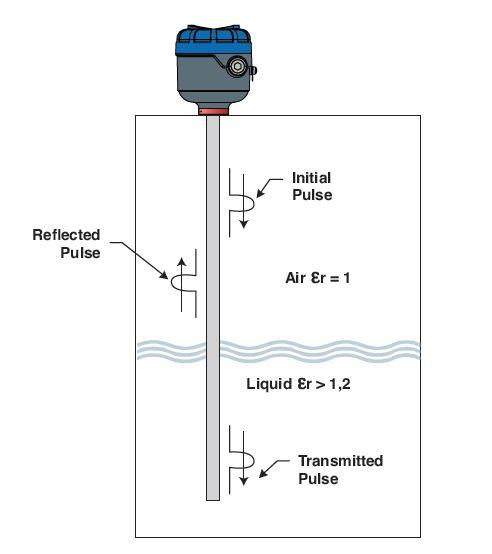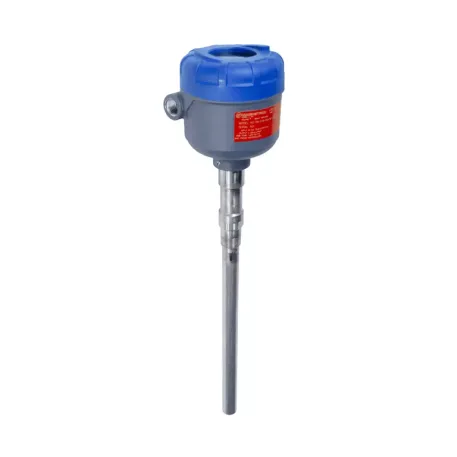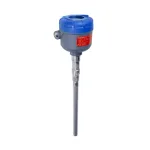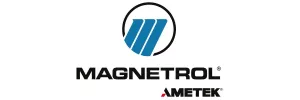The product
Features
- Multivariable, two-wire, 24 VDC loop-powered transmitter for level, interface, volume, or flow.
- Level measurement not affected by changing media characteristics.
- No need to move levels for calibration.
- Overfill Capable probes allow for “true level” measurement all the way up to the process seal, without the need for special algorithms.
- 4-button keypad and graphic LCD display allow for convenient viewing of configuration parameters and echo curve.
- Proactive diagnostics advise not only what is wrong, but also offer troubleshooting tips
Probes
Choosing the proper guided wave radar (GWR) probe is the most important decision in the application process. The probe configuration establishes fundamental performance characteristics. Coaxial and single element (rod or cable) are the two basic configurations used today, each with specific strengths and weaknesses.
Single element GWR probes act quite differently from coaxial designs. The pulses of energy develop between the center rod and the mounting nut or flange; the pulse propagates down the rod as it references its ground at the top of the tank. The efficiency of the pulse “launch” is directly related to how much metallic surface exists around it at the top of the vessel.
Signal transmission can be significantly improved by placing a single rod inside of a bridle or chamber.
Operating Principle
ECLIPSE Guided Wave Radar is based upon the technology of TDR (Time Domain Reflectometry). TDR utilizes pulses of electromagnetic energy transmitted down a wave guide (probe). When a pulse reaches a surface that has a higher dielectric constant than the air (?r = 1) in which it is traveling, a portion of the pulse is reflected. The transit time of the pulse is then measured via high speed timing circuitry that provides an accurate measure of the liquid
(or solids) level. The amplitude of the reflection depends on the dielectric constant of the product. The higher the dielectric constant, the larger is the reflection.

Approvals
| ATEX | Ex ia, Ex n |
| IEC | Ex ia, Ex n |
| FM US/Canada | IS,NI |
| SIL | SIL 2 (1oo1) |
request quote






